Latvijos šauliai Pirmajame pasauliniame kare I WW1
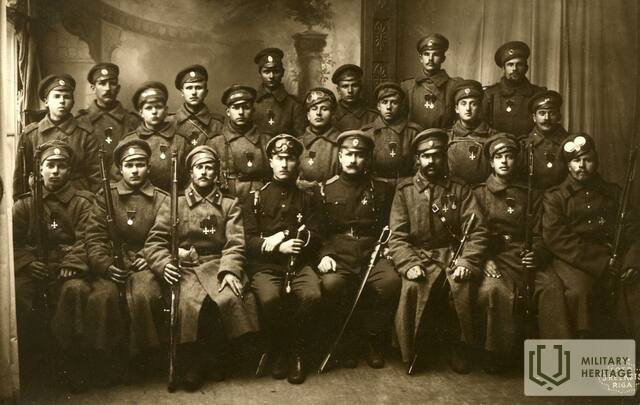
Pirmasis pasaulinis karas buvo lūžis Europos istorijoje, tai buvo ir Latvijos istorijos lūžis. Dar 1915 metais visoje Europoje siautė karas, o tų metų vasarą prasidėjo ir herojiškų latvių šaulių istorija. Tūkstančiai savanorių Latvijoje įstojo į kariuomenę ir įkūrė savo nacionalinius dalinius. Tūkstančiai vyrų pasisiūlė petys į petį su savo tautiečiais susiremti priešą.
1915 metų pavasarį vokiečių kariuomenė įsiveržė į Latvijos teritoriją, o po beveik pusmetį trukusių karo veiksmų rudenį frontas stabilizavosi, Latviją padalinęs į dvi dalis. Lemtingoji Dauguvos upė tapo fronto linija ir simboline siena, jos krantuose daugelis neteko namų ir artimųjų. Didvyriški latvių šaulių pirmtakai buvo du jungtiniai Dauguvgrivos tvirtovės darbo batalionai, kovoję sunkias kovas su besiveržiančiais vokiečiais.
Iki 1915 m. pavasario Rusijos karinė valdžia gavo keletą pasiūlymų steigti Latvijos nacionalinius karinius dalinius. Tačiau jie visi buvo atmesti. Po sėkmingų Dauguvgrivos tvirtovės gvardijos batalionų mūšių prie Jelgavos 1915 m. gegužės pradžioje vėl iškilo mintis apie Latvijos karinių junginių poreikį. Už tai pasisakė vienas ryškiausių to meto Latvijos politikų – Rusijos Valstybės Dūmos deputatas Jānis Goldmanis. Šiai idėjai ir jos įgyvendinimo galimybėms aptarti jis 1915 metų birželio 1 dieną į slaptą susitikimą pakvietė žymius Latvijos inteligentijos, kariškių, ekonominių sluoksnių atstovus.
1915 m. vasarą pražūtinga Rusijos kariuomenės padėtis buvo vienas iš svarbiausių veiksnių, sulaukusių palankaus sprendimo formuoti latvių dalinius, žadantį latvių komandų kalbą, latviškus užrašus ant kovinių vėliavų, specialias antraštes. Pasibaigus karui taip pat liko vilčių dėl politinių reformų – platesnės vietos valdžios įvedimo Latvijoje, administracinės reformos, kultūrinės autonomijos.
1915 metų rugpjūčio 10 dieną laikraštyje „Dzimtenes Vēstnesis“ buvo išspausdintas rašytojų Ato Ķeninio ir Kārlio Skalbės parašytas ir Rusijos Valstybės Dūmos deputatų Jānio Goldmanio ir Jāņo Zālīčio pasirašytas kreipimasis „Susirink po Latvijos vėliavomis“, kuriame 17–35 metų savanoriai raginami kreiptis į Latvijos batalionus ir savo tėvynės gynėjus.
Pirmosiomis dienomis atvyko tiek vyrų, kad organizaciniai komitetai dirbo net naktimis. Tarp savanorių buvo daug jaunų vyrų, nepatyrusių nei karo, nei tarnybos, tačiau jų entuziazmas nešė ir vyresnius vyrus, kurie žinojo, kur eina. Iš viso užsiregistravo apie 8000 savanorių, o per Pirmąjį pasaulinį karą latvių šaulių batalionuose buvo iki 25 000 vyrų. Iki 1916 m. latvių šauliai buvo sujungti į Daugavgryvos batalione, Rygos, Kuržemės, Vidžemės, Žiemgalos, Tukumo, Bauskės, Valmieros ir Atsargos batalionus, kurie vėlesniais karo metais buvo pervadinti į pulkus.
Latvių šaulių batalionai pirmą kartą kovojo 1915 m. spalį, kad sustabdytų vokiečių puolimą prie Rygos. 1916 metų vasarą ir rudenį šauliai kovėsi Mirties saloje, 1917 metų sausį Tīrelpurvoje prie Ložmetējkalno vyko Jelgavos operacija arba Kalėdų mūšis, kur šauliai neteko trečdalio narių, 1917 metų rudenį atsilaikė prieš vokiečių pranašumą Juglos mūšiuose prie Mažosios.
Pasibaigus Pirmajam pasauliniam karui, dalis latvių šaulių liko Rusijoje ir kovojo Pilietiniame kare įvairiose fronto pusėse, kiti dalyvavo Laisvės kovose Latvijoje. 1920 m., prasidėjus taikai, į Latviją sugrįžo daug buvusių šaulių, pastaruosius penkerius metus praleidusių kovose.
Iš maždaug 3000 latvių šaulių, kritusių iki 1917 m., 870 yra palaidoti Rygos brolių kapinėse. Likusių dėl įvairių priežasčių nepavyko nugabenti į Rygą, todėl latvių karių palaidojimų galima rasti Slokoje, Ķemeriuose, Tīnūžuose, Ķekave ir kitur.
Šalia I pasaulinio karo įvykių Latvijoje iš tikrųjų vyko ir kita kova – kova už latvių pasitikėjimą savimi, o tuo metu iš šaulių kovinės dvasios gimė ir viltis sukurti savo valstybę.
Daugiau informacijos šaltinių
1. Dokumentinis filmas "Po Latvijos vėliavomis. Didvyrių gimimas", 2015 m. Galima rasti: https://www.youtube.com/watch?v=GmZV74r6EbI [žiūrėta: 2021 05 04.].
2. Sielų pūga. Skaitmeninis muziejus. Prieiga: https://www.dveseluputenis.lv/lv/laika-skala/notikums/67/latviesu-inteligence-nolemj-dibinat-strelnieku-vienibas/ [žiūrėta: 2021 05 05.].
3. Zariņš K. „Pirmasis pasaulinis karas Latvijoje ir latvių šaulių mūšiai“, 2015. Prieinama: https://www.sargs.lv/lv/pirmais-pasaules-kars/2015-07-15/pirmais-pasaules-kars-latvija-un-latviesu-strelnieku-cinas [žiūrėta.1.5]..05
Jūsų komentarai
Susijusi laiko juosta
Susijusios vietos
Kalėdų mūšių muziejus
Muziejus, įsikūręs sodyboje „Mangaļi“ Jelgavos apylinkėse, Valgundės seniūnijoje, yra Latvijos karo muziejaus filialas. Jis atidarytas 2005 m. toje vietoje, kurioje per Pirmąjį pa saulinį karą vyko Kalėdų mūšiai. Šiose vietose iki šiol tebėra išlikę išskirtiniai Pirmojo pasaulinio karo įtvirtinimai. Kalėdų mūšių muziejaus ekspozicija yra įrengta autentiškoje vieto je po atviru dangumi. Čia galima pamatyti rekonstruotą įtvirtinimų sistemos fragmentą – lauko slėptuvę ir dalį pir mosios vokiečių gynybos linijos, vadinamos „vokiečių pyli mu“. Tai vienintelis tokio pobūdžio objektas Baltijos šalyse. Kalėdų mūšiai – vienas žinomiausių ir dramatiškiausių Pir mojo pasaulinio karo įvykių Latvijoje. Jie užima ypatingą vietą latvių karo ir kultūros istorijoje. Intensyvūs mūšiai truko šešias dienos ir pareikalavo daug aukų. Šie įvykiai dažniau siai siejami su latvių šaulių puolimu prieš Vokietijos kariuo menę, vykusiu ypač atšiauriomis ir nepalankiomis žiemos sąlygomis. Tai buvo pirmas kartas, kai didelio masto puo limas vyko be artilerijos palaikymo. Šiuo metu muziejuje eksponuojami mūšių vietose rasti radi niai. Vidaus ekspozicija lankoma nustatytu laiku, o po atvi ru dangumi esančių įtvirtinimų ekspoziciją galima apžiūrėti kiekvieną dieną. Apylinkėse sudaryti turistiniai maršrutai ir įrengti pažintiniai takai.
River trenches
The first leg of the route is in the center of the River Valley at the bus stop.
On the morning of September 1, 1917, after a three-hour artillery fire, the Germans began construction of three wooden pontoon bridges over the Daugava near Ikšķile. Approximately 560,000 rounds were fired from 1,159 cannons and mortars, which completely suppressed 66 Russian cannons and forced the retreat of the 186th division on the right bank of the Daugava. The commander of the 12th Russian Army, General Parskis, ordered the 43rd Corps to carry out a counterattack at the break and handed over to the Commander of the Corps the 33rd, 136th, 138th Division, 116th Division and 2rd Latvian Rifle Brigade.
On the afternoon of September 1, Latvian riflemen were ordered to fight against the Germans crossing the Daugava. The 2nd Latvian Rifle Brigade from Ropaži went towards the attacking German units and the soldiers of the 5th Zemgale Latvian Rifle Regiment reached the fortified positions along the right bank of the Little Jugla River around four in the afternoon. After the artillery fire, an attack on the positions of Latvian riflemen began in the middle of September 2. The defensive battles took place on the 14 km long front along the right bank of the Little Jugla. Soldiers of the 2nd Latvian Rifle Brigade with a few cannons opposed a numerically and technically stronger group of German troops, who also used aviation, fire throwers and cannon-filled cannon grenades in the attack. The riflemen managed to hold the front heroically for 26 hours until September 3. Having fulfilled their mission, the surviving Latvian soldiers resigned to the positions of Sigulda and Cēsis by order of the 12th Army Command. The losses were very severe - the 5th Zemgale and 6th Tukums Latvian Rifle Regiments knocked out more than half of the fighters, the 7th Bauska and 8th Valmiera Latvian Rifle Regiments suffered less.
Cultural Heritage Centre "Tīnūži Manor"
The Cultural Heritage Centre ‘Tīnūži Manor’ is located in Ogre municipality, Tīnūži village, 7 km from the cities of Ogre and Ikšķile. The first written evidence about the manor dates back to the 16th century. Until the mid-18th century it was considered an economic production unit with small and insignificant buildings. But over time it grew into a large farm. During World War I, battles between the Russian and German armies took place here, and the Latvian Riflemen were also involved. During the War of Independence Tīnūži manor was used as the headquarters and armoured car park of the 1st Valmiera Infantry Regiment of the Latvian Army. In 1932, the manor was given to the Union of the Latvian War Invalids, which provided accommodation and care for war veterans. During World War II (in 1943) the German Army unit FAT 212 was transferred from Estonia to Tīnūži manor. It was a saboteur unit that prepared soldiers to fight the Red Army. Latvian soldiers were also trained in the arts of intelligence gathering, guerrilla warfare tactics and sabotage. The lord house of Tīnūži manor was destroyed when the Red Army was moving towards Riga. Nowadays it is a place with a beautiful landscape and historical buildings on the banks of the Little Jugla River. Exhibits dedicated to historical events, including the ones concerning the Latvian Riflemen, can be seen at the Cultural Heritage Centre ‘Tīnūži manor’.
Monument to the Battle of the Mazā Jugla at Tīnūži
Located in Ikšķile region, Tīnūžu village, by the highway near Tīnūži primary school.
A memorial to Latvian riflemen who fought against the German army during World War I. The battle of the Little Jugla River on September 1-2, 1917 was the culmination of the Riga operation. The German army launched an attack on Ikšķile with the aim of capturing Riga and capturing the 12th Russian army. German army units, crossing the Daugava via pontoon bridges, reached the vicinity of the Little Jugla River, where they were blocked by Latvian riflemen. They were ordered to delay the adversary until the entire Russian 12th Army left the siege without being captured by the German army. The fighting is taking a heavy toll on both warring parties.
Today you can see the monument to the sculptor Jānis Karlovs, "The Altar of Heroes", which was unveiled in 2005 and will be dedicated to Latvian fighters. Tīnūži Manor, where the exposition is located, is 300 meters away.
Kulkosvaidžio kalnas Tyrelio pelkėje
Kulkosvaidžio kalnas (Ložmetėjkalnas) yra Jelgavos apy linkėse, Valgundės seniūnijoje, šalia automagistralės A9. Tai Pirmojo pasaulinio karo mūšių vieta ir vienintelis vals tybinės reikšmės kultūrinis ir istorinis draustinis Latvijoje. Ložmetėjkalnas yra ant Ilgosios kopos, priklausančios Nor dekių–Kalnciemo kopagūbriui. Pavadinimas atsirado tais laikais, kai čia buvo įrengti neįveikiami Vokietijos kariuo menės įtvirtinimai, ginami sunkiaisiais kulkosvaidžiais. Kalėdų mūšiai – vienas žinomiausių ir dramatiškiausių Pirmojo pasaulinio karo įvykių Latvijos istorijoje. 1917 m. Ložmetėjkalną puolė ir užėmė Rusijos kariuomenės latvių šaulių bei sibiriečių daliniai. Jie paėmė į nelaisvę apie 600 priešo karių ir užgrobė vertingų trofėjų. Patys šauliai tvirtino, kad būtent jie nusipelnė vadintis šios aukštumos užkariautojais. Kulkosvaidžio kalno (Ložmetėjkalno) apylinkėse yra išlikę atminimo ženklai ir kitų čia vykusių mūšių liudijimai. Kas met sausio mėnesį čia vyksta renginiai, skirti Kalėdų mūšių atminimui. Ši vieta tapo latvių šaulių didvyriškumo ir narsos simboliu. Čia pastatytas 27 m aukščio apžvalgos bokštas, nuo kurio atsiveria Kalėdų mūšių vietos vaizdas.
Christmas battles memorial at Antinu Brethren Cemetery
Located in Babīte district, on the side of the road near the former Antiņi house and the old medicine warehouse.
The cemetery of Antiņi or Tīreļi soldiers was established during the First World War. The defense positions of the army of the Russian Empire were located in the area. In 1917, during the Christmas battles, the headquarters of the 5th Zemgale Latvian Rifle Regiment and an infirmary with a medicine warehouse were located nearby.
In the night of January 5, 1917, in the light of eight huge bonfires, 105 fighters of the 5th Zemgale Latvian Rifle Regiment were buried in military honor. They fell in battle against the German army or died from injuries. The funeral ceremony was led by Regiment Commander Jukums Vācietis. In later years, soldiers from other units of the Russian army were also buried in the cemetery. In 1925, a monument to the architect Eizen Laube was unveiled in the cemetery, and the territory was landscaped. Information about the 3,800 soldiers buried in the cemetery can be found in many places, but it must be assessed as unlikely and unverified.
The second monument to the soldiers of the first independent Latvia in Marupe
is located in Mārupe district, before the building of the golf club "Viesturi" on the forest road, opposite the sign to the golf training ground.
The authors of the project idea are Miķelis Jakunovs, Mārupe region guide, and Visvaldis Dumpis, the owner of the plot of land "Dumpmaļi".
In November 2014, during the week of Latvian patriots, in honor of Latvian soldiers, a second monument to Latvian soldiers was unveiled in the forest near Dzilnupīte, on the border of Mārupe and Babīte counties, in one of the battle sites of the First World War. The conceptual author and financier of the monuments is Visvaldis Dumpis, they were created by sculptor Ivars Feldbergs. The owner of the memorial, Visvaldis Dumpis, would like people to gather here not only on June 14 and March 25, but also on July 10, the anniversary of the founding of the national defense forces, and other important historical events for Latvians.
On November 9, 2018, an informative stand about the history of the place and attractions was opened near the monument. It is dedicated to the history of the place, telling about the "Adieņi" houses that once existed here and the Ķurbja family living there, the events of the First World War in the area, as well as the historical objects that can no longer be seen in nature - Dūči Bridge, Dzirnava Pond and Mill, Hunting Baths.
Latvian soldiers’ former medical warehouse
Located in Babīte district, near the Antiņi soldiers cemetery and restored trenches.
During World War I, from 1915, defensive positions of the army of the Russian Empire were located in this area. In 1917, during the Christmas battles, at the Antiņi house was the headquarters of the 5th Zemgale Latvian Rifle Regiment and an infirmary with a medicine warehouse, which was headed by the prominent Latvian military doctor Pēteris Snīķeris.
During the Christmas battles, the attacks of Latvian riflemen on German army units took place in particularly harsh and unfavorable conditions. The injuries sustained in the fighting were of all kinds - wounds, contusions and injuries caused by firearms, as well as frostbite. Thousands of Latvian soldiers had to be provided with timely medical assistance. It was organized so that the injured received care as soon as possible. There were unarmed paramedics on the battlefield who provided first aid and removed the wounded from dangerous places. Dressing points were set up in the vicinity of the battlefields, where care was continued and sorting was carried out. Severely wounded soldiers were evacuated to hospitals or hospitals in carts and cars. Cemeteries were set up near Lazarete, where the dead were buried.
Nowadays you can see the old medicine store. The Antiņi Soldiers Cemetery is nearby, as are World War I trenches and dugouts. The environment is suitable for walks in the woods, revealing vivid evidence of military heritage.
WWI Historical Exploration Route and dugout
Located in Olaine, near the Olaine Museum of History and Art.
The historical route was established in 2018 at the site of the fortifications of the Russian army during World War I, which were part of the defense system of the area. The fighting between the German and Russian armies in the Olaine area attracts attention for several reasons. The marshy terrain prevented the warring parties from making rapid progress and required a variety of skills from the soldiers to operate in adverse conditions. Accurate terrain analysis, reconnaissance, and fortifications or engineering structures played an important role in the war.
Nowadays, the cognitive route is freely available and gives a rough idea of the living conditions of soldiers. The renovated buildings are closed, but can be seen by contacting the specialists of the Olaine History and Art Museum in advance.
Death Island
The group of islands is located in Daugava on the southern side of the Riga HPP reservoir near Daugmale. The Death Island is one of the scariest and most legendary battlefields of World War I. When the Russian Army withdrew from Kurzeme and Zemgale in 1915 some units remained on the left bank of Daugava, where they took positions to fight the German Army. The banks of the river were connected by a bridge. One of the largest chemical weapons usage cases in the territory of Latvia took place here. Latvian soldiers called the place ‘Death Island’, but soldiers of other nationalities called it ‘Hell’. The position of Death Island was of strategic and symbolic importance. For Latvian soldiers it was part of Kurzeme occupied by Germany. Fights took place on the banks of Daugava near Ikšķile, and in some way they were associated with the fights of the ancestors during the Crusades. Nowadays this location is accessible by boat. Territory of the Riga HPP reservoir that was not flooded can be seen. The monument designed by E. Laube still remains. Defensive position elements have been reconstructed in some places. There is an information stand on the bank of Daugava near the Ikšķile Kābeļu hill. Death Island became a group of islands after the construction of the Riga HPP reservoir was finished.
Ogre History and Art Museum
Ogre History and Art Museum was established in 1981. The museum collection comprises more than 40 thousand different units obtained in the territory of Ogre city and the former Ogre district. It extensively depicts the cultural and historical heritage starting from ancient times till modern days.
In the exhibition “From Bank to Museum” the visitors can get acquainted with the history of the building at 36 Brīvības street, and its transformation over the period of 50 years. Initially built as a bank of the USSR, it has lately become the home of Ogre History and Art Museum.
The exposition “Holiday-Makers in Ogre” is dedicated to one of the brightest and most legendary pages in the history of the town. It shows the recreation possibilities, the entertainments of the holiday-makers’, as well as the legends entwining the cultural and social life of Ogre from the beginning of the 20 th century till World War II. The life story of Ogre as a resort town is presented by carefully selected documents and objects, as well as their attractive artistic presentation.
Exhibitions at the museum change monthly. The thematic exhibitions are usually dedicated to different historical events but the artists, such as painters, ceramists, graphic designers, photographers and representatives of other creative professions from Ogre Municipality and the whole country, are represented in the art exhibitions.
Exposition of military bikes in the Bicycle museum in Saulkrasti
The Bicycle Museum is located in Saulkrasti not far from the A1 highway and the railway station Pabaži, near the White Dune. Museum’s collection is made up of technically the most interesting examples of bicycle development history in Latvia. It is the largest bicycle collection in the Baltics with about 60 bicycles made and used in Latvia, including army-type bicycles. In the beginning of the 20th century many armies started to widely utilise the availability and benefits of bicycles. Special bicycle units were formed because of their mobility. Bicycle units were able to gather intelligence and launch unexpected attacks more easily, and were more mobile than regular infantry when it came to operations over a wide area. After World War I the Latvian Army also had bicycle units who used Latvian-made army bicycles. Any soldier who was in such a bicycle unit had to meet strict requirements. Good stamina, eyesight and hearing, as well as a healthy heart and lungs were a must. They could not weigh less than 80 kg and their height had to be 165-180 cm. The standard in the Latvian Army was that a well-trained cyclist should be able to cover 80-100 km in day, and up to 150 km in forced conditions. In winter, when bicycles could not be used, skis were used. A soldier from a bicycle unit had to be able to ski 50-60 km per day. Many soldiers from bicycle units would later become professional athletes.
We have about 5000 visitors every year.
Saulkrasti dougouts
Located in Saulkrasti, in the coastal dunes near the restaurant "Lagoon".
Russian army fortifications were built during World War I to provide coastal protection against German army landing operations. It is part of the fortification system of the protection area, which was located in the vicinity of strategically important objects.
During the First World War, the Russian army had established several lines of defense systems in the territory of Latvia. Should one of the lines be disrupted, new positions and additional forces would prevent the German army from moving forward. One of the lines was located in the zone that started in Saulkrasti, continued in Līgatne, Nītaure and ended in Koknese, joining the first line of defense that stretched along the bank of the Daugava. The aim was to fortify the area around Saulkrasti, as there were many important objects. Several crossings over rivers, a branched road network leading in the middle of Vidzeme, as well as protection positions that reached the sea shore.
Today, the place has trenches in a beautiful seaside forest overlooking the sea. It is one of the attractions in the wide range of Saulkrasti tourism.
The Freedom Monument in Riga
It is located in the center of Riga, on Brīvības Square.
The Freedom Monument is one of the most outstanding monuments of Latvian history, architecture and art. It was built according to the project of Kārļis Zaales based on public donations. Opened in 1935 as a symbol of Latvian people's freedom and love of the fatherland. Together with the Riga Brothers' Tomb ensemble, it belongs to the most valuable examples of monumental architecture and sculpture.
The Freedom Monument expresses the ethical and aesthetic values of Latvian culture. The symbols reflect the philosophical nature of freedom and the Latvian nation's historical ideas about the stages of the struggle for independence. Indicates the embodiment of physical and mental strength. The heroic language tells about the Latvian nation as a self-reliant, active maker of history and a determiner of its own destiny.
In its place, there was originally a monument to the Russian Tsar Peter I. In World War 1, it was dismantled to be transported by ship to Petrograd. The ship was torpedoed by a German submarine and sank off the island of Worms in the Estonian territory. The Soviet occupation regime planned to demolish the Freedom Monument several times, but it did not materialize.
Nowadays, you can see one of the symbols of Latvia and observe the traditions of the army honor guard.
General Karl Gopper Memorial Room in the Muscat Hometown
Located in Plāņi Parish on the bank of the Vija River.
The memorial room of General Karl Gopper in his native house "Muscat" can be seen.
The Muscat farm was run by the general's brother, August Goppers, because the talented warlord was busy with major events and world wars. In 1920, the general returned to Latvia, to his native home. But many responsible duties connected him with Riga. August continued to operate in Muscat. In 1940, General Gopper was arrested and shot on March 25, 1941, in a check cellar. In 1944, the Gopper family went to Kurzeme as refugees with three horse-drawn carriages. The war divided the family, Alexander Gopper's daughters - Biruta, Elza and Anna - remained in Latvia. They were not allowed to return to Muscat. The houses were large and carefully maintained. Three four newcomer families were accommodated in separate rooms. A horse farm was set up in the big barn. A fire broke out in 1980 due to mutual scabies. The barn and the big barn burned down. Fortunately, the fire did not spread to the house, the flames were repelled by large trees planted by our ancestors.
In 1991, after the miraculous Awakening, the Latvian state was reborn for the second time. In 1992, the family of General Gopper's brother Augustus regained Muscat as an ancestral sanctity. For ten years, all the cheeses worked hard to save the houses from destruction, to restore and build the ruined buildings to make the entire Muscat farm beautiful. The houses have been restored to their old appearance, there is also a memorial room for General Karl Gopper. The memorial room can be visited in advance by calling +371 29396870, +371 29254285.
Excursion to the monument to the soldiers who died in the First World War in the park of Spāre manor
Located in the territory of the Spāre manor complex.
During the First World War, the Russian Army Field Infirmary was located in Spāre Manor. The 24 soldiers who died there, including Latvian riflemen, were buried in the nearby cemetery. The monument was unveiled on October 6, 1935.
Rows of lindens were planted on both sides of the road during the memorial site (starting from the road). In 1935, all the improvement works in the area were carried out by the students of Spāre under the guidance of the school administrator Kārlis and Alvīne Skalbergs.
The pupils of Spāre Primary School in Amata Region are also involved in the cleaning of the memorial site. The land guards of Cēsis 27. KB provide great support in these works.
A torchlight procession to the memorial to the fallen in World War I, which is being held on 11 November, has become a tradition. This event is always crowded by the guards of Cēsis 27. KB, there is always a chaplain with them. Festive halls are an integral part of the event.
In the territory of the Spāre manor complex, an excursion to the monument to the soldiers who fell in the First World War (45 min.) Is offered by prior arrangement by calling +371 26558464.
Memorial stone for Latvian riflemen in Plakanciems
In Plakanciem, Latvian riflemen won their first victory in the historic night battle of October 29, 1915 - only a week after the 1st Daugavgrīva Latvian riflemen battalion had left Riga and started operations at the front. The successful battle of Plakanciems began the heroic struggle of our archers. The night attack near the Misa River also had an invaluable moral significance - no one questioned the fighting abilities of the Latvian archers, they quickly became popular and many Latvians from the Russian regiments joined our national units.
The commemorative stone was made by order of the Ķekava district municipality by the Ķekava district stone processing and restoration company "Akmens prāvaškas centrs "AKM"" - stone craftsmen Guntis Pandars and Pēteris Zvaunis.
Success in the Battle of Plakanciems was ensured by careful continuous four-day reconnaissance, the sudden attack plan prepared by the commander of the 1st company, Friedrich Briež, and the heroism of our soldiers.
The situation at the front at that time was very tense, as German soldiers in several places continued to slowly approach Riga. Near Plakanciems, they recently crossed the river Misa and started to set up a front bridge position, deploying the 2nd battalion of the German 376th infantry regiment and 4 machine guns.
The attack of the Latvian archers was based on surprise, quick action and coordination of various actions. Four hand grenades were issued to each rifleman of the 1st company, 60 soldiers put on their white coats because a thin snow had just fallen. When the attackers crept close enough to the German positions, at 22.00 the signal was given and the strike began. Both of our machine guns fired at both flanks of the enemy so that the Germans could not bring up reserves. Throwing hand grenades, Latvian riflemen quickly stormed the German trenches, Russian artillerymen fired at the bridge over the Misa river and the enemy's main defense line. The enemy soldiers were confused - suffering heavy losses, they retreated across the river and left the bridgehead in the hands of the attackers. One of our companies had defeated an enemy unit four times larger!
Latvian archers lost six fallen - Juri Buteniek, Frici Ārmani, Rudolf Hofmani, Kristaps Krūmiņa, Jānis Nauri and Kirijana Šnurov. They are all buried in the Riga Brothers' Cemetery. Of the eight wounded, two later died - Jāzeps Brūveris (buried in the Pleskodāle cemetery) and Jānis Skuja (buried in the Riga Brothers' cemetery). German losses – 31 soldiers killed, 34 captured and 45 wounded. The attackers received a machine gun and 35 rifles as trophies.
Monument to the soldiers who died in the First World War and the Latvian War of Independence
Located on Baznīcas Street opposite St. Anne's Church.
A monument to the soldiers who died in the First World War and the Latvian War of Independence can be seen.
On May 1, 1923, a "Hero's Grove" was planted opposite the Mazsalaca Lutheran Church, where an oak tree was dedicated to each fallen. According to Likert, a total of 97 oaks were planted - 23 for the fallen in the War of Independence and 74 for the fallen in the First World War. However, the press at the time mentioned that 106 oaks had been planted.
On August 21, 1927, a concrete monument built by architect Pauls Kundziņš was unveiled in the Heroes' Square, in the construction of which the sculptor Vilhelms Treijs also participated.
The monument is located next to the church of St. Anne in Mazsalaca, which was built in a specially designated place to slide (58.6 m), the beautiful tower can be seen from afar. The church is well preserved, as it was neither destroyed nor adapted for any other use during the Soviet era.
Latvian archers' Brothers' graves
It is located near the Nītaure Orthodox Church, next to II. for the memorial ensemble of soldiers of the Soviet army of the World War.
On September 2, 1934, the graves of the shooters and unknown soldiers, who fell in a clash with the Germans near Nītaure in September 1917, were consecrated.
Chronological order in the construction of graves:
In September 1917, the front line was strengthened in the section Saulkrasti-Līgatne-Nītaure-Lobes ezers (near Krapa)-Koknese. On the road Mālpils-Peļni-Nītaure, the 6th Tukum and 5th Zemgale regiments had their last clash with the enemy - German troops. Colonel Jukums Väetis said about it:
"After this battle there was a lull on the front."
The fallen were buried near the Orthodox church in Nītaure and in various places of clashes in the section Mālpils-Peļni-Nītaure.
1922 newspaper "Latvijas Kareivis" No. 113.21.05 in the article "Historical battle memorials" it is mentioned that "The grave of the Brothers of Latvian Riflemen is still located in Nītaure, where clashes with the Germans also took place".
On July 17, 1929, a commission went to Nītauri to look at the burials, which found that in Nītauri, around 100 soldiers from the Russian army were buried near the Orthodox church (you should know, Latvian rifle regiments were founded as part of the Russian army), while 6 Latvian riflemen were buried near the Lutheran burial chamber. : Otto Bērziņš (5th Zemgale Regiment), Kārkliņš (6th Tukuma Rifle Regiment), Alfrēds Bedrītis (fell near Cēsis in the Liberation Battle in 1919), Sviļums (archer), Žanis Krūtainis (5th Zemgale Regiment) and an unknown Latvian soldier .
In 1933, the archers buried near Pelņi's house were reburied in Mālpils cemetery, while the remains of fallen soldiers in some places in More parish were transferred to the Nītaure Brothers' cemetery near the Nītaure Orthodox Church. 6 fallen soldiers who were buried in the Lutheran cemetery were also reburied here.
In the funds of the Cēsi Museum, there is a photograph of an unknown author, which shows the graves of the Brothers in Nītaure before World War II. world war.
After II. During World War II, the Soviet soldiers who died in the battles near Nītaura and More were buried in these cemeteries, and all evidence that the graves of the Latvian Riflemen Brothers were located here were removed. In 1984, the currently visible memorial ensemble of Soviet soldiers or Red Army men was created.
Thus, the memorial place of Latvian fighters was wiped off the ground.
In 2017, thanks to the initiative and work of Dace Eipures, a local history enthusiast and environmental guide of Nītaure, a new memorial was created in the territory of the old Brothers' graves.
You can familiarize yourself with the history of the memorial site and World War I in Nītaure in the "Latvian history adventures in Nītaure" program of the environmental guide Dace Eipure, by calling in advance and requesting a visit +371 29156765!
Cesis Brothers Cemetery
Located in Cēsis Lejas Cemetery, Lenču Street 15, Cēsis.
One of the most important memorial sites of the First World War and the War of Independence in Cēsis is the Brothers' Cemetery in the Lower Cemetery.
The cemetery is the monument of the Brethren's Cemetery, built in 1927 by the artist and thinker of Cēsis Augustus Julla (1872-1958), dedicated to the soldiers buried in the Brothers' Cemetery from 1915 to 1920.
About 200 soldiers are buried in the Brothers Cemetery of Cēsis Lower Cemetery. Among them, an unknown number of Latvian riflemen and Russian soldiers killed in the First World War, as well as soldiers of German (10), Polish and other nationalities. During the Latvian Liberation War, 22 fallen soldiers of the 5th (2nd) Cēsis Infantry Regiment, as well as 11 freedom fighters who fell in other Latvian army units, were buried in these cemeteries. 2 Estonians, 15 victims of Bolsheviks and also Latvian Red Riflemen are buried in the Brothers' Cemetery.
Cēsis history and art museum in the New Castle of Cēsis
The Cēsis History and Art Museum is located in the very centre of the Old Town of Cēsis, in the New Castle. The museum holds a permanent exhibit of history and interiors named ‘Cēsis, a Symbol of Latvian History’, with two thematic sections: the exhibit ‘Red-White-Red Flag in the History of Cēsis and Latvia’ explains the history of the Latvian national flag from the 13th to 20th centuries, the approved national symbol, the flags of Latvian rifle battalions and the traditions of using national colours during the Latvian War of Independence. The exhibit ‘Cēsis and the Latvian War of Independence’ focuses on the founding of the Cēsis Company in December 1918, the joint battle efforts of Estonians and Latvians in the 1919 Battles of Cēsis, the time when, during the Bermondt Affair, Cēsis served as the temporary capital of Latvia for a short time, as well as the history of the Cēsis Victory Monument. In an escape room named ‘Legends of the Battles of Cēsis’, the participants have one hour to find their way out by solving puzzles, making connections and finding hidden objects. The Cēsis Company, one of the first units of the Latvian Armed Forces, was established on 8 December 1918 in Cēsis Castle by Senior Lieutenant Artūrs Jansons. The museum’s exhibit features a memorial plaque dedicated to the Cēsis Company, unveiled on 8 December 1933 at the Cēsis New Castle, which, at the time, served as the headquarters of the 8th Daugavpils Infantry Regiment and the garrison officers’ club.
Kauču or Veco pine
The pine tree is located on the left side of the Strenču-Valka highway, about a kilometer beyond the border of Strenču, 140 meters from the highway, in the forest, 400 meters NW from Kauči.
A piece was torn from the rough bark of the tree and the words of the song were carved into the trunk with a knife in old Latvian print, which are now partially legible – ˝ …c smyltā / …ten tħli cīn… / … návīgo as… / …ņa wems a… / …dz katuli / … strādniek… ˝ ("Come, beloved girl, until the fight, take the deadly blade in your hand. We are workers who have suffered a lot.").
Researchers have expressed the version that this poem could have been engraved in the pine trunk between 1905 and 1918, when Latvia was overrun by the revolution and the First World War, state forest specialists of Latvia know how to tell.
Memorial place of J. Lapiņš, the author of the first flag of Latvia
It is located in "Lejas Pintuli", Veselava parish, Priekuļi district.
A memorial to Jānis Lapiņas, the author of the pre-flag of Latvia, can be seen.
The Latvian national flag was created during the First World War. In 1915, when creating the flags of the Latvian rifle battalions, some artists offered red and white colors to the flag throwers. In the second half of 1916, the red-and-white flag thrown by the pedagogue and journalist Jānis Lapiņa was made by his student, Marianna Straumane, a teacher at the refugee shelter in Valmiera.
It is the first known and actually made Latvian national flag, which has survived to our days.
In 2014, a memorial to Jānis Lapiņas, the author of the pre-flag, was opened in "Lejas Pintuulis" of Veselava Parish, Priekuļi County.
The first known authentic Latvian national flag, which passed through the refugee corridors in Russia, was carefully hidden during the Soviet and German occupation, and is currently kept in the Cēsis Museum of History and Art . It was given as a gift in 1997 by their daughter Lija Poga.
Latvian War Museum
The Latvian War Museum is located in the Old Town not far from the Freedom Monument in a historic defence building called the ‘Powder Tower’. There are 11 exhibits in the museum. There are various weapons, documents, uniforms, awards, badges and other items detailing the everyday life of a soldier in war. The Latvian War Museum is one of the oldest museums in Latvia. Its origins can be found in World War I. Museum’s collection was made up mainly of personal items of soldiers or items found on battlefields. After Latvia gained its independence the main goal of the museum became to create an exposition on the military history of Latvia and the active role of the population in protecting their land. In 1937 the museum was expanded and was technically one of the most modern museums in Europe at that time. The Powder Tower was one of the fortification towers of Riga. Some evidence dates back to 1330 where it has been mentioned as the ‘Sand Tower’. The tower was destroyed in 1621 when Riga was besieged by the Swedish Army. But in 1650 a new tower for storing gunpowder and weapons was built. After the city’s fortifications were taken down, the Powder Tower remains as one of the most important pieces of evidence of the Riga defence system.
Latvian riflemen positions and trenches in Tīreļi
Latvian Riflemen dugouts and trenches in Tīreļi are located in Babīte parish, Mārupe municipality, in the vicinity of the Antiņi Latvian Riflemen Cemetery and the former medicine warehouse. During World War I this was the defensive position of Latvian Riflemen of the Russian Imperial Army. A complex of trenches and surface dugouts was built in the sandy hills. Trench or positional warfare is the best way to accurately describe World War I and emphasise the importance of fortifications. They were based on the research of military engineers and adapted to the environment and the development of new weapons. The everyday life of a soldier is a continuous improvement of defensive fortifications. Sometimes soldiers would give the dugouts names that reminded them of their homes and would help to forget about the reality of the war. Trench lines were complex defensive systems that were hard for the enemy to take. With the development of weapons these defences became even more sophisticated. The roofs of dugouts were reinforced to withstand artillery shells. Trenches were made in changing patterns and directions so that explosions would cause as little damage as possible. Movement passages had pockets that were used as short-term hiding spots during artillery fire, because they protected soldiers from shrapnel and rubble. Today part of the fortification has been restored and you can visit 3 restored dugouts and a 100 m long section of the trenches.
Privati kolekcija „Šeimos klėtis“ (Dzimtas klēts)
Privati kolekcija „Šeimos klėtis“ yra šeimos ūkyje „Ābeļu Putni ņi“. Nuo 2007 m. ši vieta supažindina su vienos giminės istorija per pasakojimus, daiktus ir atkurtą lauko slėptuvę. Lankytojai kviečiami susipažinti su Pirmojo pasaulinio karo, Latvijos kariuomenės, Antrojo pasaulinio karo, Brolių kapinių Rygoje ir Kalėdų mūšių istorija. Senovinėje klėtyje galima pa matyti rankomis siuvinėtas staltieses, pačių austus tautinius drabužius, indų spintą, slides ir net barono Korfo dovanotą vežimo ratą. 2011 m. pradėtas lauko slėptuvės iš beržo rąstų atnaujinimas. Joje įrengta krosnis, vietos miegojimui, o sten duose eksponuojami daiktai, susiję su Pirmuoju pasauliniu karu – indų šukės, nuotraukos ir jau surūdijusios ginklų dalys. Ekspozicija padeda įsivaizduoti Pirmojo pasaulinio karo scenas, aprašytas Aleksandro Gryno romane „Sielų pūga“. Daug dėmesio skiriama Vidžemės 4-ajam šaulių pulkui ir Ka lėdų mūšiams. Minimi žymūs žmonės: karys Robertas Suokas, palaidotas Brolių kapinėse Rygoje, rašytojai Aleksandras Grynas, Janis Akurateris, kompozitorius Arvydas Žilinskis ir kiti. Ekspozicijos teritorijoje galima pamatyti Pirmojo pasaulinio karo bombų duobes ir šaltinį, iš kurio kareiviai sėmėsi geria mojo vandens. Ekskursija trunka 1,5–2 val. ir vedama latvių bei rusų kalbomis.
Paminklas Jelgavos gynėjams
Paminklas Jelgavos gynėjams stovi Jelgavos apylinkė se, prie Svėtės mokyklos. Jis skirtas Daugavgryvos krašto apsaugos kariams, kurie 1915 m. balandžio pabaigoje sustabdė vokiečių kariuomenės veržimąsi į Jelgavą. 1915 m. gegužės pradžioje Jelgavoje buvo surengta iškilminga demonstracija, skirta šiam svarbiam įvykiui paminėti. Tai, kad latvių krašto apsaugos kariams pavyko sulaikyti vo kiečių puolimą, tapo svarbiu argumentu – Janis Čakstė ir jo bendraminčiai tuo pasinaudojo siekdami įgyvendin ti idėją kurti latvių šaulių dalinius Pirmojo pasaulinio karo metais.
Paminklas buvo atidengtas 1991 metais, o jo autorė – skulptorė Alina Veibach (1923–2011).
Nordeķi – Kalnciemas dune ridge
The approximately 30 km long dune ridge, which can be traced in nature from Iļģuciems (with minor interruptions) to Tīreļi today, is one of the most impressive landforms of the Seaside Lowlands, which is rarely perceived as a single natural formation. The dune was formed on the shores of one of the last Baltic glacial lakes, as the waters of the Baltic glacial lake receded. The dune ridge consists of two parallel 50–100 m wide dune belts. They are usually 6–10 m high, but their highest points reach 16–19 m above sea level. In the vicinity of Kleisti, Imanta and Beberbeķi, the beautiful pine forests covering the dunes are a popular place for walking, recreation and sports, and in winter - cross-country skiing. The part of the dune in the vicinity of Lāčupīte is associated with the events of the Bermontiades. On the dune in Pārdaugava is the Lāčupe or Lācaras cemetery . Between Pinkie and Babīte, the Beberbeķi Nature Park has been established to preserve the dunes. The western part of the Nordeķi-Kalnciemas dune ridge, approximately 10 km long, is called the Long Dune . Near the Long Dune (south of Trenči) is the Antiņi Brothers Cemetery , the Latvian Riflemen's Hospital medicine warehouse , and the renovated Latvian Riflemen's dugouts . South of the Long Dune is a massif of swampy forests and marshes, including Rāvājs and Maztīrelis . Opposite Maztīrelis is Ložmetējkalns with a viewing tower and a resting place and the so-called German rampart section . Even further west, near the Long Dune are the Latvian Riflemen Brothers Cemetery and the Piķi Brothers Cemetery. With greater or lesser interruptions, trenches are visible almost along the entire Nordeķi-Kalnciemas dune ridge. In the southwestern part of the Long Dune – in the swampy forests that adjoin it from the south, bomb craters from the First World War are visible. Along the entire length of the Long Dune (south of it), small forest paths run, suitable for walks and longer hikes – a great opportunity to explore the sites of the First World War battles.
Krači Mountains Monument
The Krāči Hills are one of the largest coastal dunes of the Litorina Sea. Its highest point is 29 m above sea level and 26 m above the surrounding plains. The Litorina Sea is said to be the predecessor of the Baltic Sea, which existed approximately 7,000 to 5,000 years ago.
The 6th Special Brigade of the 12th Russian Army launched the attack from the Krāči Hills during the Christmas Battles, with the task of breaking through the German front from the Great Tīreļi Swamp to the Lielupe River. During the month-long battles, the Russian army gained an area of 25 square kilometers, but the losses were enormous – 45 thousand fallen, wounded and missing soldiers. The losses of the Latvian riflemen were 9 thousand fallen, wounded and missing soldiers. During the Christmas Battles, the Latvian riflemen gained immense fame as heroic and brilliant soldiers, paying a very high price for it – their lives.
A monument has been erected in memory of those who fell in battle. Every year on November 11, Lāčplēsis Day, and on November 18, the anniversary of the proclamation of the Latvian state, candles are lit at this place in memory of the fallen heroes.
The protected nature area "Krāči Mountains" as a dune mound of the Litorina period
Susijusi istorija
Bērzaine gimnazija – Pirmojo pasaulinio karo liudininkė
1915 m. pavasarį ir vasarą vokiečių kariuomenė užėmė Kuršą ir Žiemgalą. Dauguvos pakrantėse buvo išsidėstę kariaujančių šalių kariuomenė. Vidžemė tapo fronto teritorija, o Cėsis – fronto miestu, aplink kurį įsikūrė carinės Rusijos armijos šiaurinio fronto 12-osios armijos štabas, kuris 1915 metų vasarą ir rudenį persikėlė į Bėrzainą prie Cėsių (Birkenruh bei Wenden), dabartinės Cėsių mokyklos pastate ir teritorijoje. Bērzaine Elementary School.
Latvijos lankininkų kasdienybė Mirties saloje
Prisiminimuose vaizdingai aprašoma Mirties salos karių kasdienybė.
Įrašas dienoraštyje apie momentą, kai kariai sužino apie pasiruošimą kalėdinėms kautynėms.
Latvių lankininkai ir jų karininkai apie mūšio pradžią buvo informuoti paskutinę akimirką. 5-ojo Žiemgalos latvių šaulių pulko puskarininkis Rudolfas Ivanovas savo dienoraštyje aprašė paskutinį vakarą prieš mūšio pradžią. Trumpas, bet ryškus ir autentiškas tekstas, parodantis labai svarbų kariui momentą – jis sužino apie mūšio dieną.
Prisiminimai apie Karo muziejaus kūrimo pradžią
Pasakotojas aprašo aplinkybes, kuriomis buvo įkurtas Karo muziejus. Minėtos problemos ir surinkimo darbai.
Taip Rygoje gimė Brolių kapinės
Pasakotojas aprašo, kokiomis aplinkybėmis buvo sukurtas žymiausias Latvijos memorialas, skirtas žuvusiems kariams. Kaip matyti iš prisiminimų, tautos didvyrių kapinės susidūrė su aibe kliūčių ir piktadarių – nepritariančiu požiūriu iš ne tik bažnyčios, bet ir Rygos miesto vadovybės.
Kārlis Zāle ir Laisvės paminklas
Pasakotojas prisiminimus apie Kārli Zāli apibūdina kaip asmenį, sukūrusį žymiausius meno kūrinius Latvijoje. Aprašymas skirtas Zaalei atminti 1942 m. (K. Zaalės mirties metais). Atsiminimai parinkti K. Saale kūrybai charakterizuoti remiantis autoriaus asmeninėmis savybėmis ir pasaulio suvokimu.
Apie Sidabrinės kalvos atidarymo šventę
Ištrauka iš prisiminimų istorijos iš generolo Jāņo Baložo kalbos Sudrabkalninio paminklo atidengimo dieną. Visas tekstas yra atidarymo renginio atpasakojimas, prezidento Kārlio Ulmanio ir generolo Jāņo Baložo kalbos. Prisiminimai pasirinkti, nes juose vaizdingai matyti Sudrabkalnino apylinkėse kovojančios Latvijos kariuomenės būklė.
Apie Latvijos lankininkus Olaines apylinkėse
Prisiminimuose atsispindi Latvijos lankininkų kasdienybė Olaine apylinkėse. Aprašomos ne tik gyvenimo sąlygos, bet ir įprasta užduotis – priešininko pozicijų žvalgyba.
Apie Daugavgrivos tvirtovę
Pasakotojas aprašo įvykį Daugavgrivos tvirtovėje I pasaulinio karo metais, kai ją subombardavo vokiečių dirižablis. Tvirtovė buvo vienas iš strateginių objektų, išlaikęs savo svarbą iki Antrojo pasaulinio karo pabaigos.
Gynybinių pozicijų formavimas.
Aprašyme apskritai nagrinėjama mūšio lauko įtvirtinimo problema. Jis sukurtas remiantis I pasaulinio karo patirtimi ir situacija, kai būtina organizuoti didelius įtvirtinimų kūrimo darbus.
Apie kalėdines kovas
Kalėdinės kautynės baigėsi sausio 11. Trečią mūšio dieną latvių šauliams pavyko užimti stipriai įtvirtintą vokiečių kariuomenės poziciją – Ložmetējkalni. Kalėdinių kovų kaina buvo labai didelė. Šimtai Latvijos ir kitų Rusijos armijos karių žuvo bandydami išmušti vokiečius iš savo pozicijų. Pasakotojas vaizdingai aprašo mūšio lauko scenas pasibaigus kalėdinėms kautynėms.
Kieme rastas Admirolui Makarovui skirtas atminimo ženklas
Maža karinė relikvija gali papasakoti didelę istorinę istoriją. Ir nors ženklelis reprezentuoja Rusijos ir Japonijos karo metu vykusius įvykius, jis parodo languotą karo istoriją ir mūsų latvių šaulių įsitraukimą į kitus karinius konfliktus tiek prieš Nepriklausomybės karus, tiek po jų.





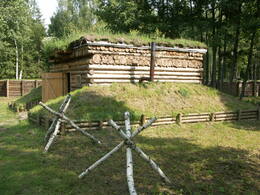
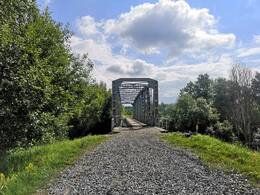

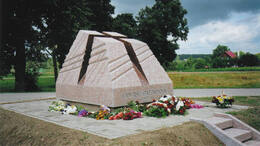
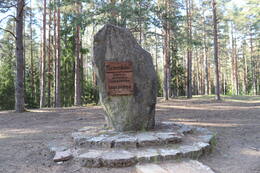
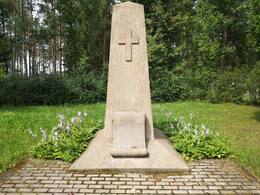
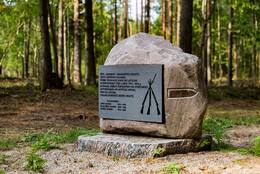
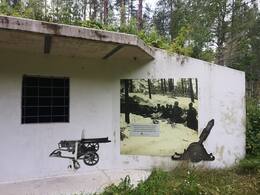
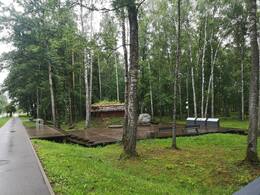
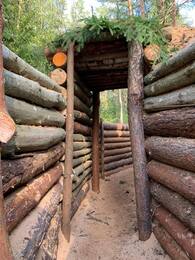
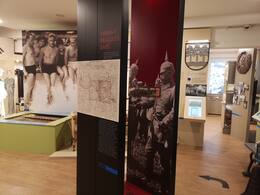
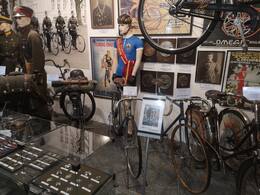
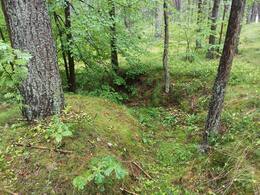
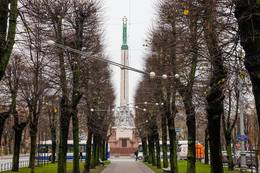
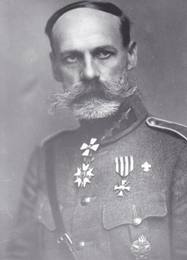
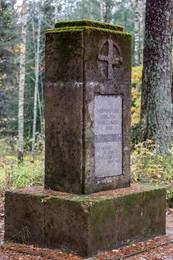
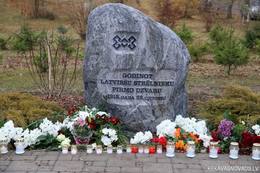
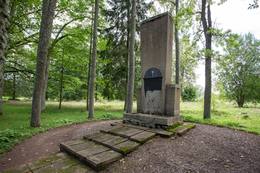
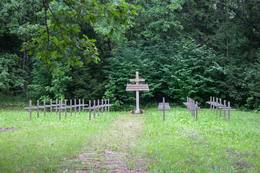
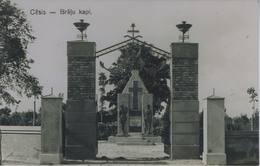
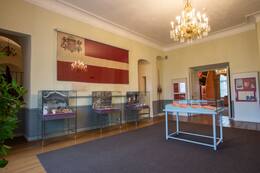
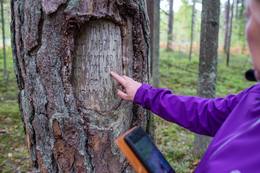
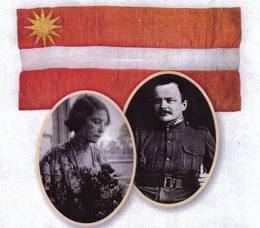
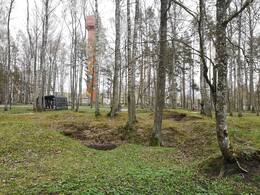
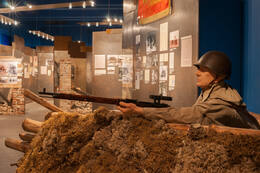
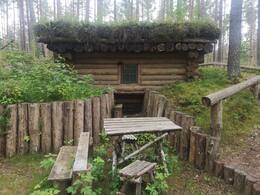
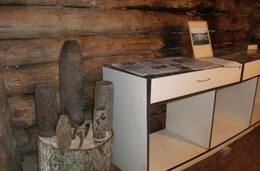
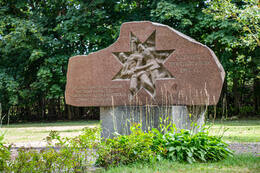
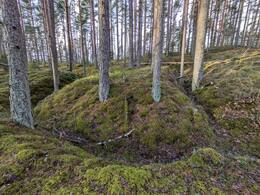
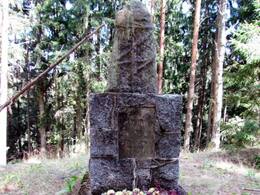
Prašau pataisyti žuvusių latvių šaulių sąrašą. Mano motinos dėdės brolis Indriķis Kadiķis, Jokabo sūnus, krito 1917 m. sausio 16 d., gimęs Snepel.